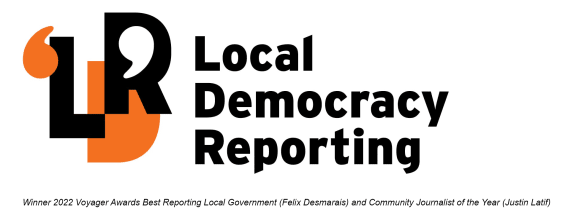
Meng Foon. Photo: Paul Rickard / Gisborne Herald
Race Relations Commissioner Meng Foon is calling for a more targeted approach to healthcare funding in the wake of poor outcomes for Māori living in Tai Rāwhiti.
The Health Select Committee recently released its 2021/22 review of Te Whatu Ora's Tai Rāwhiti division, which showed Māori were lagging behind in a plethora of monitored health results.
With one of the highest proportions of Māori in the country - 55 percent of just over 50,000 people - the review showed the region's majority was suffering.
In the area of women's health, 54 percent of those aged 50-69 had breast screening every two years, compared with 71 percent of non-Māori.

That number was the lowest it had been for Māori women for at least six years.
Following childbirth, 63 percent of non-Māori were smoke-free compared to just 31 percent of Māori.
They also had poorer outcomes in cervical screening, immunisation rates for infants, rheumatic fever hospitalisations, mental health restraining orders and asthma admission rates.
Speaking to Local Democracy Reporting, Foon said Māori continued to bear the brunt of inequality, the result of historic injustice that had led to poverty.
"Māori had land and they had wealth. They had the economics, therefore they could provide for their . . . health and educational wellbeing," Foon said.
"Since the signing of Te Tiriti, all of that has diminished. It's intergenerational."
He also pointed to the Tohunga Suppression Act 1907 as an example of the way Māori had been oppressed through colonisation - legislation that intended to stop tangata whenua using traditional healing practices of a spiritual nature.
"It really suppressed Māori health and wellbeing."

Gisborne. Photo: Gisborne Herald / Supplied
Foon hoped Te Aka Whai Ora Māori Health Authority, established in July 2022, could make a start at addressing the inequality rife within the healthcare system.
For a start, the government needed to do better at funding healthcare based on community needs, he said.
"There is not enough funding for the Tai Rāwhiti and this needs to be addressed."
As part of the review, Te Whatu Ora Tai Rāwhiti were asked a series of questions about what it would do to address particular issues were it given $1 million per year in untagged funding across four years.
It replied it was unable to answer those questions because the former Hauora Tai Rāwhiti (district health board) was now part of the much larger Te Whatu Ora.
"Given we were aware that we would no longer be operating as an individual DHB, the information does not exist," it wrote on multiple occasions.
Asked what treatable health conditions had the biggest impact on Māori in the region, Te Whatu Ora Tai Rāwhiti listed diabetes, cardiovascular disease, cancer and respiratory conditions.
Targeted equity health funding within a boosted local economy was its answer to a question about which single policy from central government could improve Māori health outcomes.
The greatest inequality for Māori in the region was life expectancy, it said.
Inequality within oral health services was the most obvious target from a cost perspective.
In the review, Te Whatu Ora Tai Rāwhiti said it was building a health system that embedded Te Tiriti o Waitangi as its foundation, making the whole health system accountable for Māori health equity.
Local Democracy Reporting is Public Interest Journalism funded through NZ On Air.





